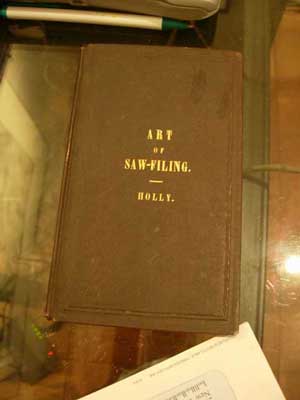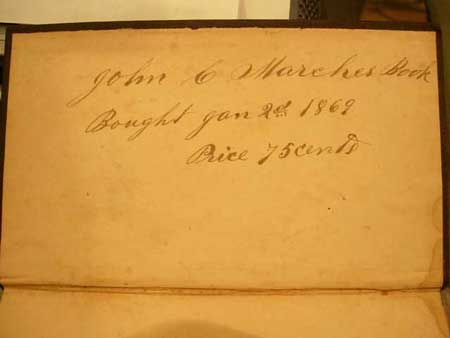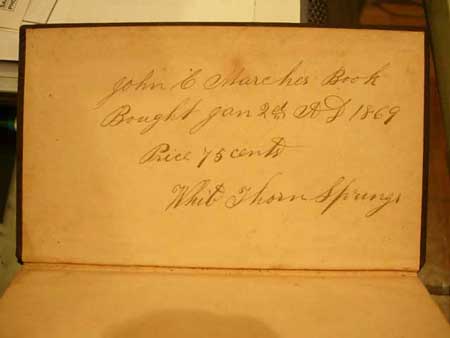 As recently as 5 years ago if one wanted to consult any of the major historical books on woodworking one needed to have an extensive personal library or access to a really good research library - or (preferably) both. It was during this time I started collecting woodworking books in earnest. Today, thanks to web sites like the Toolemera Press, and Evenfall's The Woodworks Libraryand others more and scans of rare woodworking books are showing up on line - which is great for the person who needs some information on the spur of the moment and it's certainly great for 3 AM research and of course you don't need to jump through hoops to get the stuff either (there is a downside which I will discuss at another time). As recently as 5 years ago if one wanted to consult any of the major historical books on woodworking one needed to have an extensive personal library or access to a really good research library - or (preferably) both. It was during this time I started collecting woodworking books in earnest. Today, thanks to web sites like the Toolemera Press, and Evenfall's The Woodworks Libraryand others more and scans of rare woodworking books are showing up on line - which is great for the person who needs some information on the spur of the moment and it's certainly great for 3 AM research and of course you don't need to jump through hoops to get the stuff either (there is a downside which I will discuss at another time).
Anyway, the book in the picture is "The Art of Saw-Filing" by Holly - the first book printed in the US (and anywhere to my knowledge) just on saws. Aside from the obvious feeling of collecting what things can be learned from this copy that cannot be learned from a PDF scan?
 It's the inscription on the inside covers that adds some dimension to the story. In 1869 John Marches paid $0.75 for this book. He thought this information important to write on both the front and back inside covers He added his town name to the back cover: White Thorn Springs - which seems to have disappeared in the past 140 years. It's the inscription on the inside covers that adds some dimension to the story. In 1869 John Marches paid $0.75 for this book. He thought this information important to write on both the front and back inside covers He added his town name to the back cover: White Thorn Springs - which seems to have disappeared in the past 140 years. What's interesting to me is that in 1867 seventy five cents was a LOT of money. For example a 4" saw file cost about 11 cents each. So in today's money that's about $35.00 which is a chunk of change for such a small book. However it's obvious that Mr. Marches felt strongly enough about understanding saw sharpening to not just spend money on the book but also write into it when and how much he paid for it. I think it gives us an idea of how important the book was thought to be at the time - Very important! What's interesting to me is that in 1867 seventy five cents was a LOT of money. For example a 4" saw file cost about 11 cents each. So in today's money that's about $35.00 which is a chunk of change for such a small book. However it's obvious that Mr. Marches felt strongly enough about understanding saw sharpening to not just spend money on the book but also write into it when and how much he paid for it. I think it gives us an idea of how important the book was thought to be at the time - Very important!
|
 Joel's Blog
Joel's Blog Built-It Blog
Built-It Blog Video Roundup
Video Roundup Classes & Events
Classes & Events Work Magazine
Work Magazine


 As recently as 5 years ago if one wanted to consult any of the major historical books on woodworking one needed to have an extensive personal library or access to a really good research library - or (preferably) both. It was during this time I started collecting woodworking books in earnest. Today, thanks to web sites like the
As recently as 5 years ago if one wanted to consult any of the major historical books on woodworking one needed to have an extensive personal library or access to a really good research library - or (preferably) both. It was during this time I started collecting woodworking books in earnest. Today, thanks to web sites like the  It's the inscription on the inside covers that adds some dimension to the story. In 1869 John Marches paid $0.75 for this book. He thought this information important to write on both the front and back inside covers He added his town name to the back cover: White Thorn Springs - which seems to have disappeared in the past 140 years.
It's the inscription on the inside covers that adds some dimension to the story. In 1869 John Marches paid $0.75 for this book. He thought this information important to write on both the front and back inside covers He added his town name to the back cover: White Thorn Springs - which seems to have disappeared in the past 140 years. What's interesting to me is that in 1867 seventy five cents was a LOT of money. For example a 4" saw file cost about 11 cents each. So in today's money that's about $35.00 which is a chunk of change for such a small book. However it's obvious that Mr. Marches felt strongly enough about understanding saw sharpening to not just spend money on the book but also write into it when and how much he paid for it. I think it gives us an idea of how important the book was thought to be at the time - Very important!
What's interesting to me is that in 1867 seventy five cents was a LOT of money. For example a 4" saw file cost about 11 cents each. So in today's money that's about $35.00 which is a chunk of change for such a small book. However it's obvious that Mr. Marches felt strongly enough about understanding saw sharpening to not just spend money on the book but also write into it when and how much he paid for it. I think it gives us an idea of how important the book was thought to be at the time - Very important!
Thought provoking blog. Thanks.
PS. I like the use of a 4" file as a monetary standard. Very apt.
Regards, Ray
One is sort of tool related - Siddons "Gesture & Action", 1st ed 1807; inside is a 1950 letter from director Alec Clunes to the actors Roger Livesay and Ursula Jeans, referring to the illustrations in the book adding to the interest. Rare because still in original binding, complete (most books have illustrations removed), with only some foxing to detract. A valuable book with other treasured connections for me.
I love my collection of early UK Woodworker publications - not so valuable of course, but take up several feet of shelf space.
However for research purposes the Internet is supreme for at least:
1) Access to a wide a range of material otherwise not available at any price, or too high a price
2) You do not need shelf space
3) Manipulating/quoting material is much easier.
An area that is of concern is works by dead authors, still in copyright, out of print and hard/expensive to get. For example the books of Ken Roberts are unlikely to be republished, hard to get 2nd hand, and still very useful. Nobody benefits from the 70 year rule in this case, there should be a mechanism to allow non-commercial digital access as a default (that the owner can override) if a book has been out of print for a period of say 20 years.
Cheers Peter
Nice book and great inscription, look at that penmanship. I am wondering if there is bleed through, but it looks like he signed the paper fastened to the board? No doubt iron gall ink, can you tell if he used a metal nib or a quill to write the inscription?
Stephen